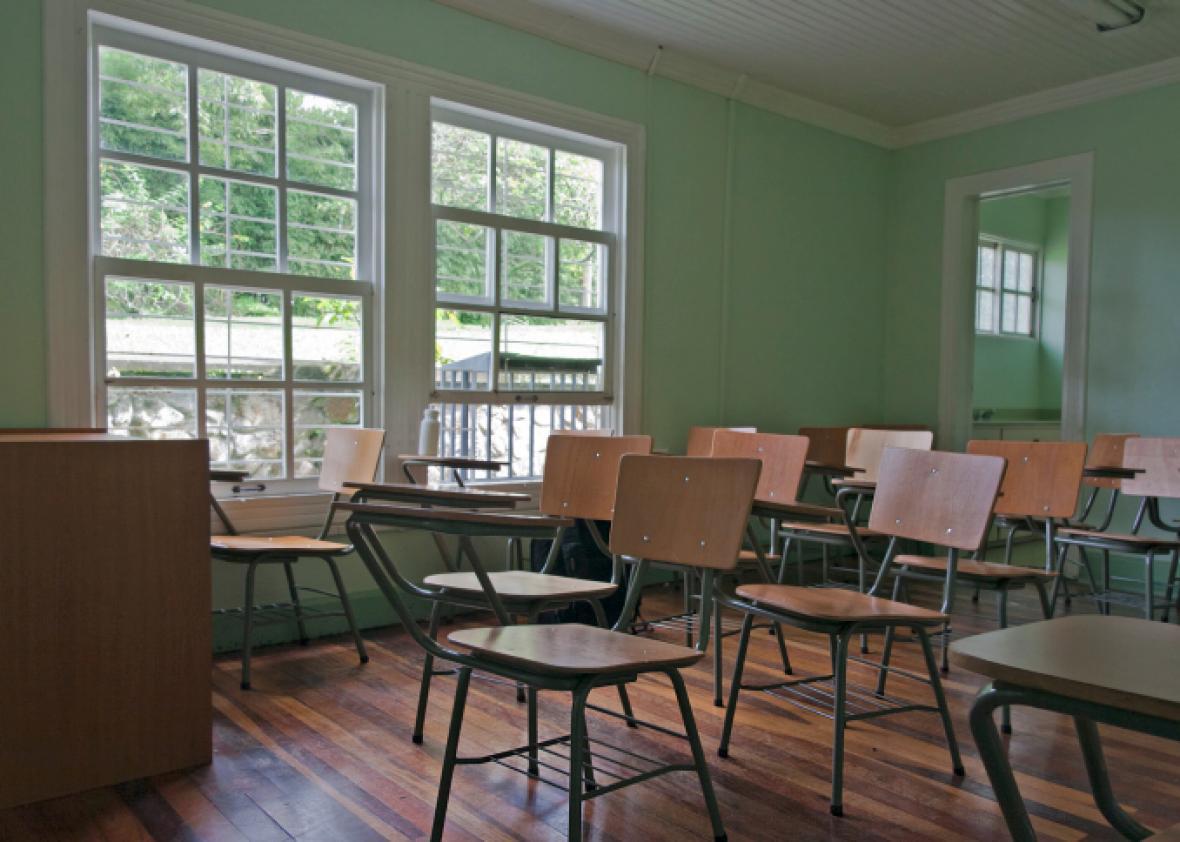Mississippi has gotten a lot of bad press in the past year for its in-school corporal-punishment practices, which is perhaps one reason its State Board of Education announced last week its plans to propose its first-ever policy regulating the restraint and seclusion of students, according to the Associated Press.
Under pressure from special-education advocates and civil-rights groups, such policies have proliferated in recent years, and Mississippi remains one of the last states with no guidelines governing the use of restraint and seclusion in schools in response to behavior problems (New Jersey, surprisingly, is another).
And in case you’re wondering what exactly “restraint and seclusion” might look like in a school setting, Mississippi has furnished us with some stunning examples, like when teachers handcuffed kids to the metal railings of the school gym for the dress-code infraction of “sagging pants,” or confined an overexcited first-grader to a three-sided pen on his eighth birthday. (“If I had that contraption in my house,” the mother of the boxed eight-year-old was quoted in the Clarion-Ledger as saying, “and my child told his teachers, ‘My mom puts me in a box when I’m bad,’ I would have been arrested and my kids would have gone to foster care.”)
According to the Clarion-Ledger story, in the 2011–12 school year alone, nearly 1,000 students were restrained or secluded in Mississippi schools, though that number is probably much higher, since data is self-reported and spotty, and districts aren’t required to track these incidents.
For all these reasons, the Mississippi State Board of Education’s just-unveiled policy—which embraces a form of restorative justice that “promotes dignity” via reinforcing good behavior and trains staff in how to “implement de-escalating techniques to defuse potentially violent dangerous behavior”—would represent a huge step forward, as well as an important school-safety victory for the Obama administration, even if the new rule falls short of an all-out ban on seclusion and restraint practices.
While President Barack Obama’s stand against solitary confinement in prisons is well-known, his administration has also called repeated attention to “the abusive and potentially deadly misapplication of seclusion and restraint techniques in schools,” to quote a letter former Education Secretary Arne Duncan sent to state school officers in 2009. And the new Every Student Succeeds Act that replaced No Child Left Behind has a section that specifically addresses the use of restraint and seclusion in schools, which has been shown to affect a disproportionate number of students with disabilities—and in particular black students with disabilities. From a 2012 Education Week report on the disparities:
Of students with disabilities who were mechanically restrained—which might mean being handcuffed, tied down, strapped to a chair, or held with equipment for that purpose—a disproportionate share, 44 percent, were black. Only 21 percent of the overall population of students with disabilities are African-Americans.
And, of all 38,792 students physically restrained by school staff members, nearly 70 percent were students with disabilities.
If this proposal passes, might a long-overdue ban on paddling kids in school shortly follow? Rome wasn’t built in a day, but we can hope.
